Found in the true heart of Mexico, Oaxaca City is not only a treasure trove of culture, gastronomy, and architecture but also a prime location for day-tripping out into the surrounding areas rich with history and natural beauty. Among the many adventures awaiting you outside the city, a day trip to Hierve el Agua from Oaxaca stands out as an adventure that captures the area’s geological wonders, historical importance, artisanal heritage, and natural marvels all in one very full day tour. This expedition carries you from the petrified waterfalls of Hierve el Agua, through the ancient ruins of Mitla, into the weaving workshops of Teotitlán del Valle, and concludes with a visit to the ancient tree El Tule. Each destination showcases a different facet of the region, offering an experience as diverse and vibrant as Oaxaca itself. So, let’s set off to explore these captivating destinations, unveiling the magic that lies just beyond Oaxaca City.
Table of Contents
Hierve el Agua
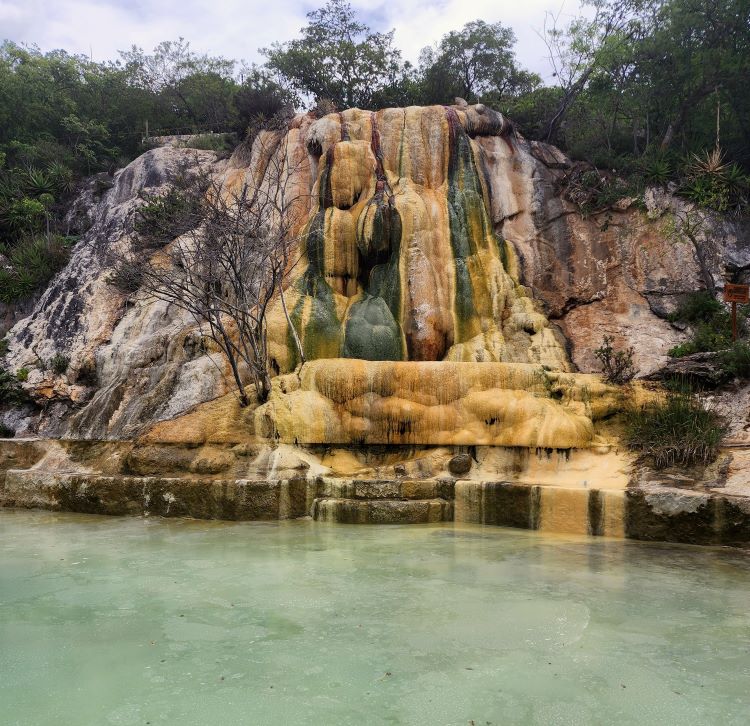
Hierve el Agua, or “the water boils” in Spanish, is a beautiful natural attraction a little more than an hour east of Oaxaca City that leaves countless visitors enchanted every year. Contrary to what its name might suggest, the water here doesn’t actually boil. We were surprised to find it quite cold actually. The name is derived from the bubbling mineral springs that feed into two cliffside pools and a unique geological phenomenon that forms petrified waterfalls.
Be aware that if you are driving yourself you can get there faster by paying to drive on the toll road. It was 96 pesos per car when we drove through. You will also pay locals a 50 peso per person fee to pass on the dirt road to the site and 20 pesos for parking at the site. That price can fluctuate but that was what we paid at the time of our trip in 2023. This amounted to less than $10 US dollars at the time of travel so I’d say it was well worth the additional expense. You can also rent a taxi for the day, just work out the cost of the drive as well as how much he or she will want per hour to wait for you. Day tours are available and can be booked often through your hotel or a tour operator advertising at the Zocalo. In our experience, these are more expensive but sometimes come with bilingual guides.
The main attraction of Hierve el Agua is the petrified waterfalls. Over thousands of years, the calcium carbonate and other minerals in the spring water have been deposited on the mountain, creating a surreal landscape resembling cascading water frozen in time. The site has two significant formations, one smaller and the other quite large, that offer a dramatic vista that looks like thick ice pouring over the side of green cliffs.
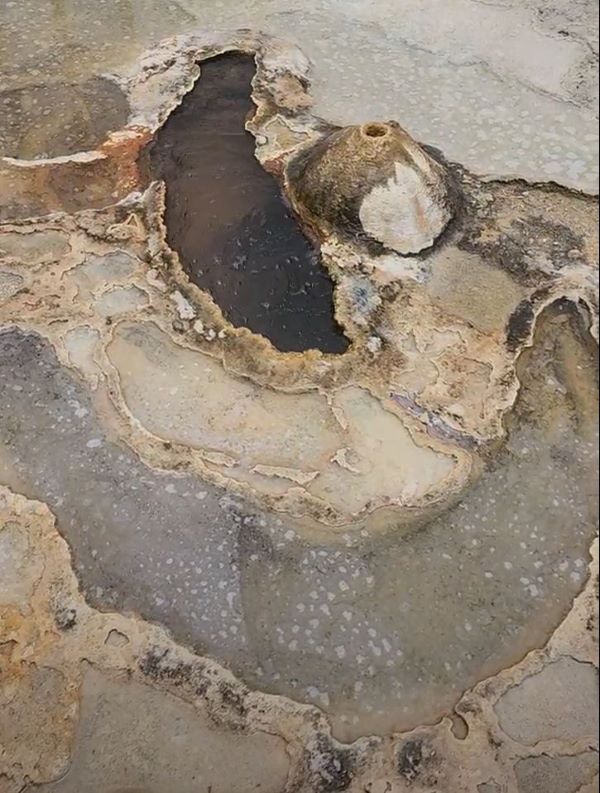
Aside from the petrified waterfalls, the mineral-laden spring water fills up several natural infinity pools at the edge of the cliff. These are remarkable spots for a refreshing dip, with the pools offering a striking view over the valleys and mountains of Oaxaca, making for a perfect backdrop to a relaxing swim.
The area around Hierve el Agua also offers various hiking trails where visitors can explore the rugged and beautiful landscape, dotted with cacti and agave plants. A walk along these paths gives visitors a chance to appreciate the area’s natural beauty, with fantastic views over the Oaxaca Valley.
Get Your Travel Goals Newsletter & BONUS Workbook
Hierve el Agua is not just about natural beauty, but it also has a rich cultural history. It was a sacred site to the ancient Zapotec civilization, and nearby you can find several archaeological sites, including the UNESCO World Heritage site of Mitla (we’ll talk about that next).
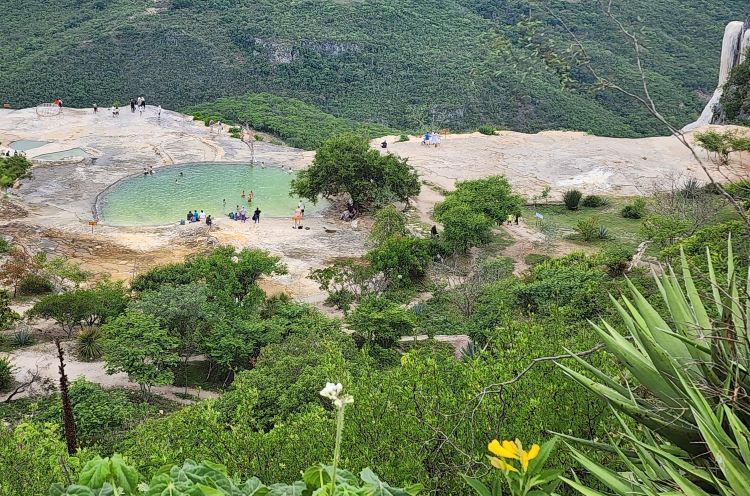
Grab a snack from anyone of the many vendors that are selling treats and meals along the path to Hierve el Agua. We grabbed some fresh fruit and I’m sure you won’t be disappointed. It is so deeply sweet and rich!
A day trip to Hierve el Agua provides an incredible opportunity for anyone visiting Oaxaca. The combination of natural beauty, swimming in unique cliffside pools, hiking opportunities, and the chance to appreciate the area’s cultural history makes it a must-visit spot.
Mitla
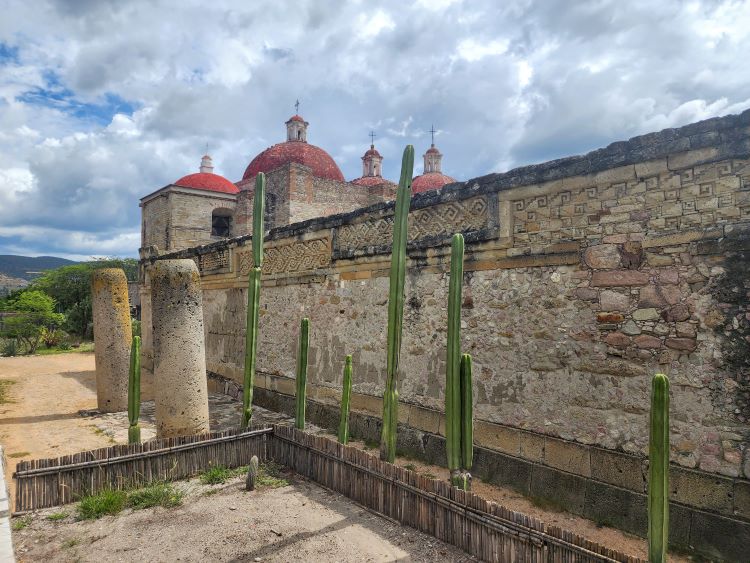
Once we left Hierve el Agua we heads back toward Mitla. Located about a half-hour drive from Hierve el Agua, Mitla is an archaeological site of great cultural and historical significance in Oaxaca. Known as one of the most important religious centers of the Zapotec civilization, the name “Mitla” is derived from the Nahuatl word “Mictlán,” which means “Place of the Dead” or “Underworld.”
Mitla was a ceremonial center and is unique for its intricate mosaics and fretwork, a decorative art form involving complex geometric designs. Unlike the large-scale monuments found in other Mesoamerican sites, the artistry and sophistication of Mitla lie in its details, especially in the extensive and intricate stone mosaic work that adorns its buildings. This incredible craftsmanship is displayed in over fourteen different design patterns throughout the site, and it’s the only one of its kind in Mexico.
Get Your Travel Goals Newsletter & BONUS Workbook
But of course, once the Spanish entered the area and saw the significance of the site they felt the need to build a church on top of it. So today Mitla is also home to a beautiful colonial-era church, the Church of San Pablo, built by Spanish conquerors on top of the Zapotec temple platform. You can see in the photo above how the ancient patterns typical of the ruins complement the top of the church wall creating a mixture of both conquering and conquered cultures as modern Mexico tries to embrace all parts of its complicated history.
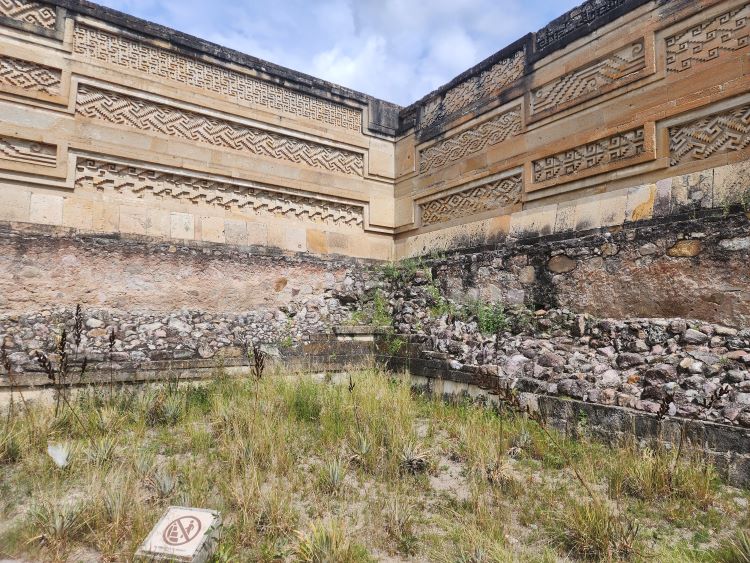
The ruins are divided into five groups, of which only two are fully excavated. The Grupo de las Columnas (Columns Group) and the Grupo del Arroyo (Arroyo Group) are open to the public. The most famous part is perhaps the Hall of Columns in the Grupo de las Columnas, where rows of towering stone columns once supported the roof of a grand Zapotec palace.
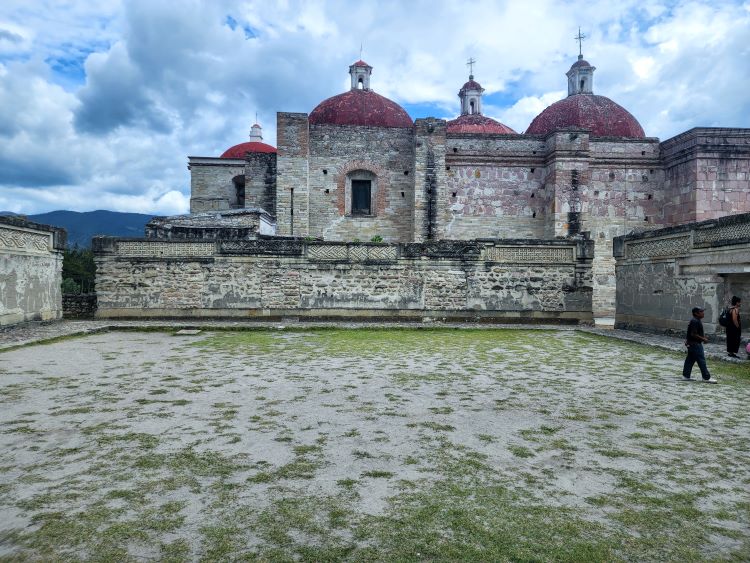
Visiting Mitla provides a profound understanding of the rich history and the artistic and architectural achievements of the ancient Zapotec civilization. Its close proximity to Hierve el Agua makes it convenient to explore both of these outstanding sites in one day, providing a fulfilling and culturally immersive experience that will undoubtedly be a highlight of anyone’s visit to Oaxaca.
Once you leave the ruins site you can grab a snack or lunch from any one of the vendors selling from the nearby market. We stopped at an ice cream vendor. If you are feeling adventurous you can top your ice cream with sal de gusano (worm) or sal de chapulines (grasshopper). Believe it or not, both are incredibly tasty toppings for your ice cream. The salty and earthy flavors bring out the sweetness of the ice cream beautifully.
Teotitlan del Valle
Just another few minutes up the road on your way back to Oaxaca City you’ll see signs for a turn-off to the town of Teotitlan Del Valle.
Teotitlán del Valle, a small village approximately 40 minutes from Oaxaca City, is renowned for its beautiful, intricately woven rugs and textiles, a tradition that spans back to pre-Hispanic times. It is a must-visit for anyone interested in traditional arts and crafts, cultural heritage, and supporting local artisans.
Get Your Travel Goals Newsletter & BONUS Workbook
The weavers of Teotitlán del Valle are masters in their craft. They use techniques passed down through generations to create exquisite textiles that tell stories of their culture and traditions. Each piece is a work of art, displaying an array of complex geometric patterns, depictions of local flora and fauna, and even significant historical and mythological events.
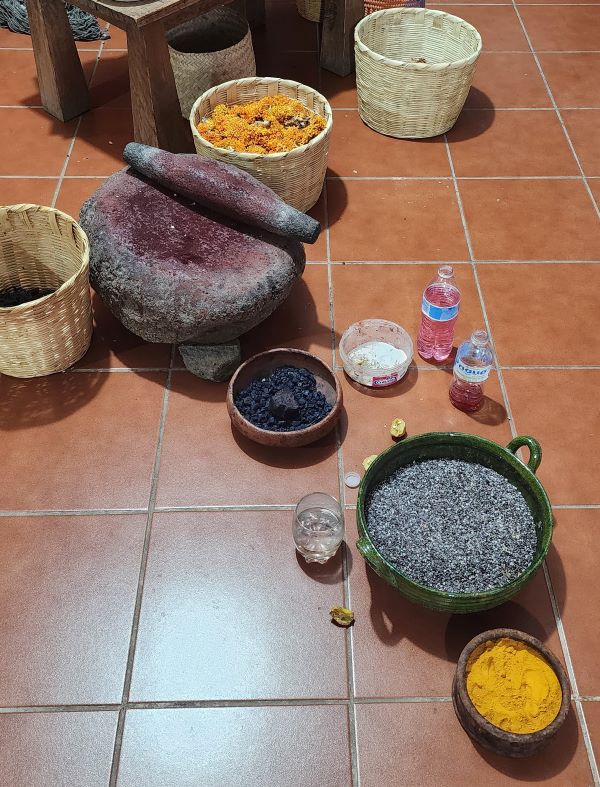
A significant aspect of these beautiful textiles is the use of natural dyes. The weavers of Teotitlán have a deep understanding of the local environment and use plants, insects, and minerals to create vibrant colors that make their textiles come alive. Visiting this village gives you a chance to see this fascinating process firsthand and gain a deeper appreciation for the time, skill, and effort put into each textile.
Supporting these local artisans is of vital importance. The income generated from their crafts helps sustain the community and ensures the continuation of their age-old weaving traditions. By purchasing directly from the weavers, not only are you receiving an authentic piece of art, but you are also contributing to the local economy and encouraging the preservation of this intricate craft. The exchange is not purely transactional either; it’s an opportunity to engage with the culture, hear the stories behind the designs, and form connections with the artisans themselves. You can read our full post on the tour we took and discover how you can have a similar experience.
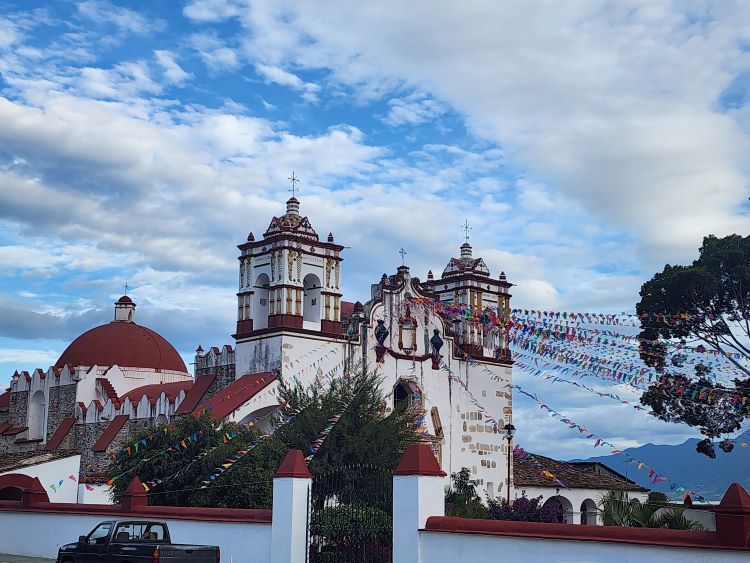
In addition to the textile workshops, Teotitlán del Valle also offers visitors the chance to explore its local market, beautiful colonial-era church, and community museum. With its rich history, cultural significance, and talented local artisans, a stop at Teotitlán del Valle provides a memorable and rewarding experience, perfectly fitting into a day trip from Oaxaca City.
El Tule
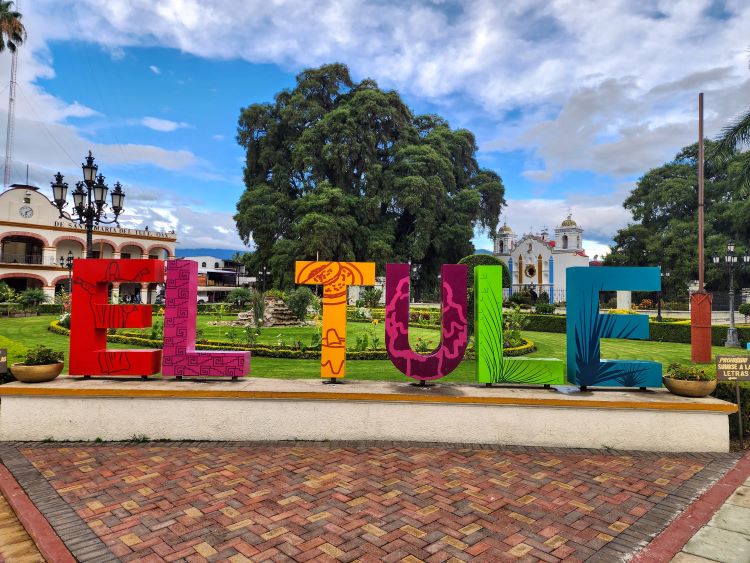
El Tule is a small town located about 9 kilometers east of Oaxaca City, a convenient drive of around 20 minutes. So if you find yourself too tired to visit at the end of your day trip, then this could easily be visited on another day. This sleepy village is a place of great natural significance as it is home to one of the world’s oldest and largest living things, a massive Montezuma cypress tree known as El Árbol del Tule (The Tule Tree).
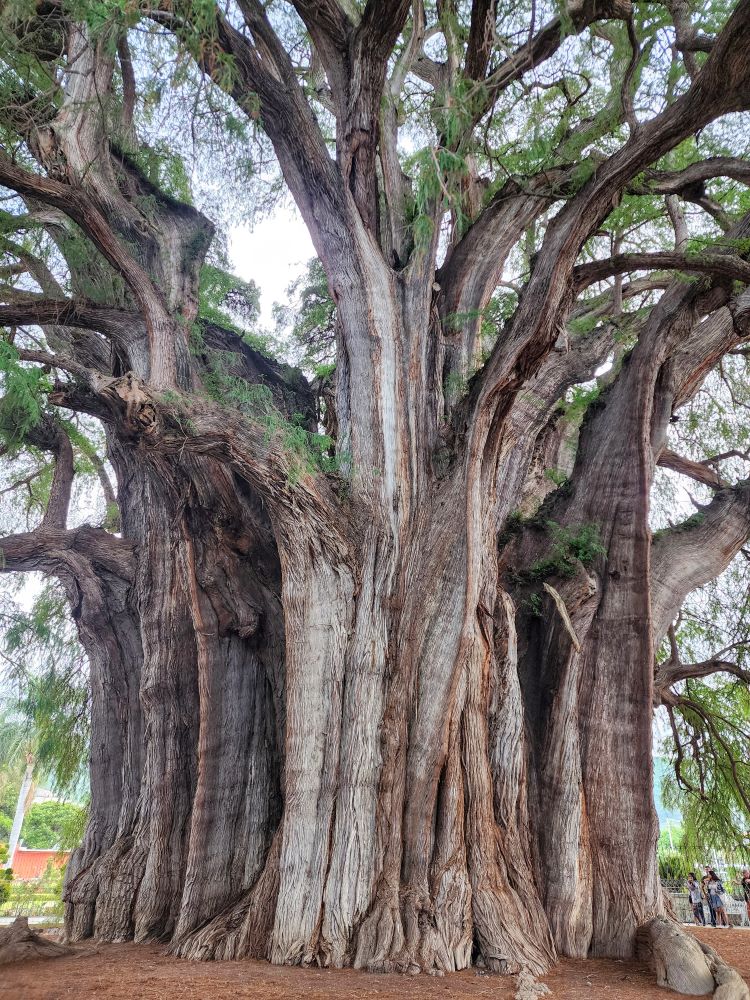
This incredible tree is the main draw of El Tule and the reason why many visitors make the trip to this quaint town. The Tule Tree is estimated to be between 1,200 and 3,000 years old, and its age and size have earned it a place in the Guinness Book of World Records as well as recognition as a UNESCO World Heritage Site. With a height of over 40 meters and a staggering diameter of more than 14 meters, it’s so broad that it’s hard to believe it’s just one tree.
Get Your Travel Goals Newsletter & BONUS Workbook
Beyond just marveling at the tree’s size, the Tule Tree offers an engaging visual experience due to the unique shapes and figures visible in its gnarled bark. Visitors enjoy pointing out resemblances to animals, faces, or other images, making the tree not just a natural wonder, but a fascinating work of natural art. If you are up for a quick tour in Spanish, there are children guides who will take you around the tree with laser pointers and explain the different shapes they see.
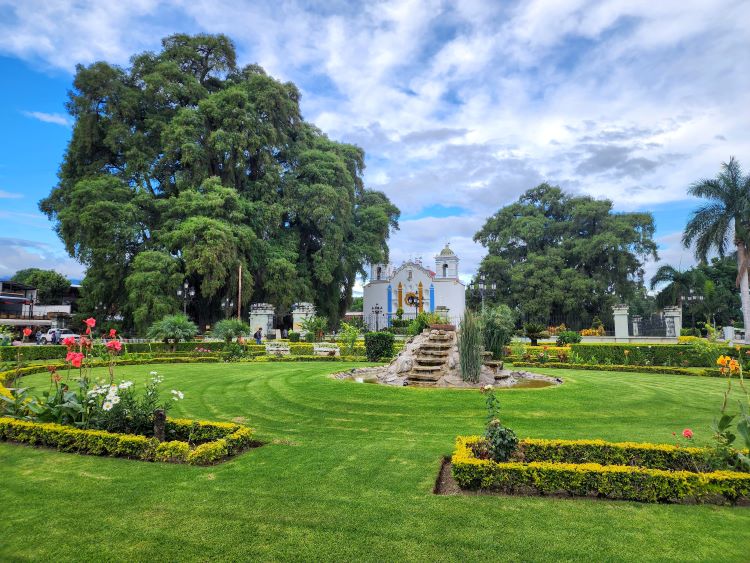
In the town itself, visitors can enjoy the serene atmosphere, wander around its pretty church, and explore local market stalls. The main square, where the Tule Tree is located, is a delightful place to relax, with traditional food vendors offering tasty local treats.
In essence, a visit to El Tule offers a rare opportunity to witness one of nature’s most remarkable creations. Its proximity to Oaxaca City makes it a perfect place to visit, blending the unique experience of the Tule Tree with the relaxed charm of a small Mexican town.
Get Your Travel Goals Newsletter & BONUS Workbook
A must-stop for dinner is just up the road from El Tule on your way back to Oaxaca. Be sure to check out Caldo de Piedra for an amazing meal that honors the heritage of the area. They also serve breakfast if you’d like to catch a meal before you head out for your drive to Hierve el Agua.
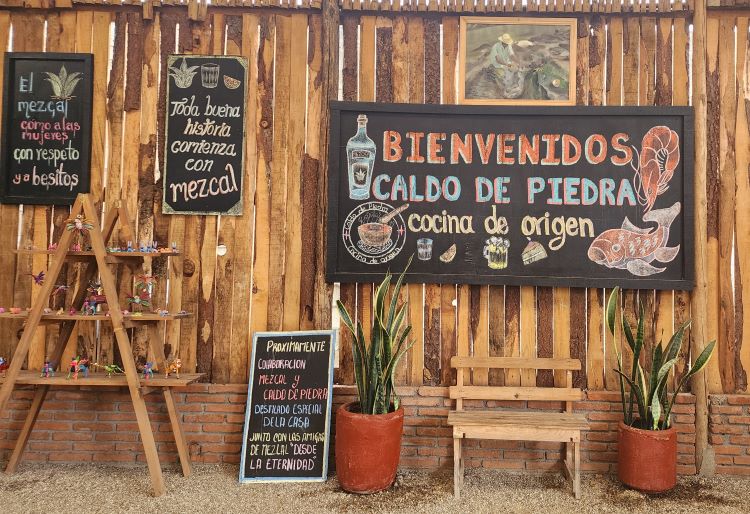
We had an amazing shrimp soup and it was such a unique experience. Caldo de Piedra means stone soup and that is because the soup we were served was heated in the traditional way, with hot stones. Clean red-hot stones are placed in the bowl with broth and shrimp and then brought to your table as the broth bubbles and boils from the heat. It was amazing, and yes, the soup tasted fantastic!
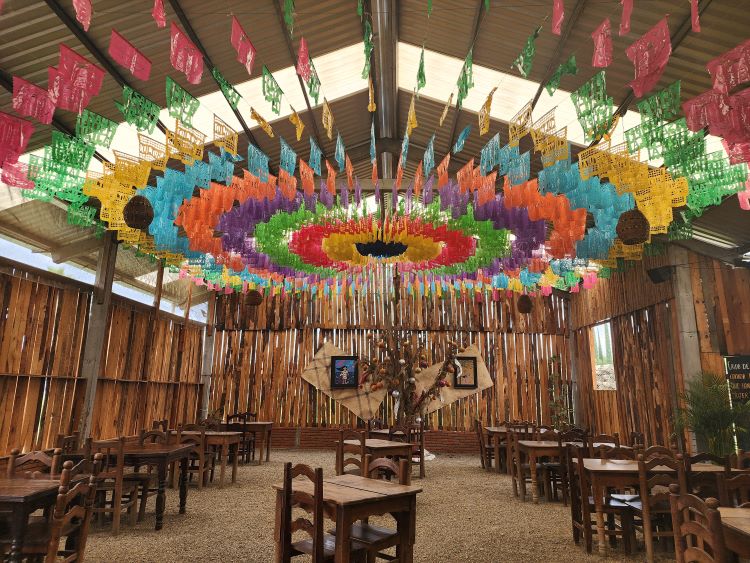
We got there right when this highly-rated spot opened and had the luxury of the place all to ourselves before they got packed later. A woman made us fresh tortillas and portions were huge. You will not leave here hungry, I promise you.
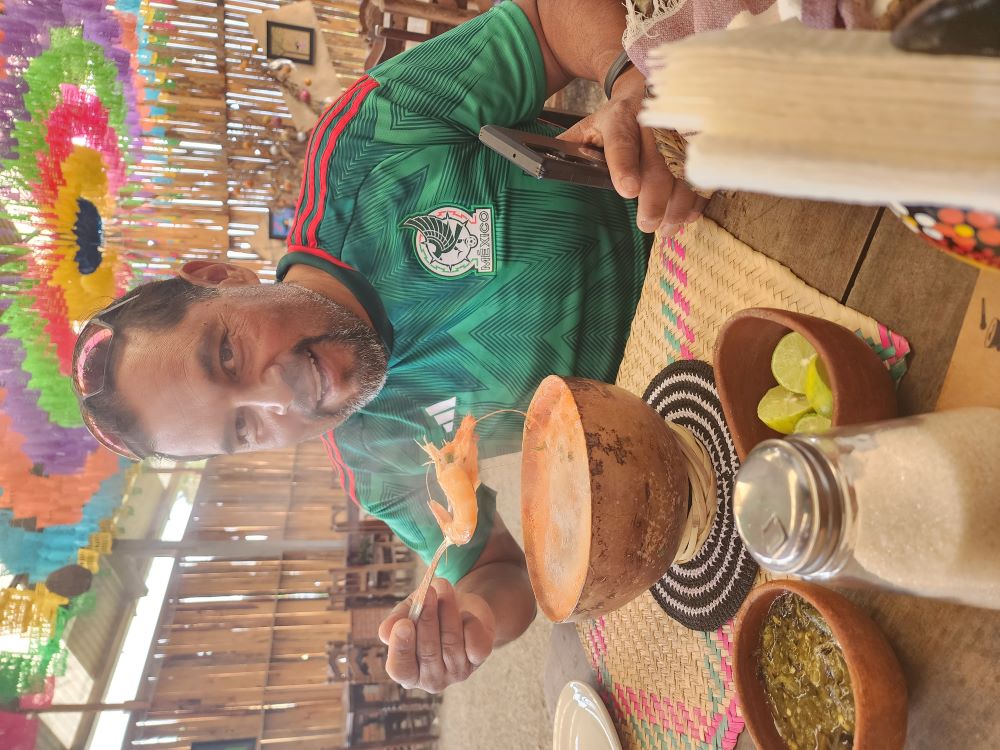
This is a full day filled with one-of-a-kind sites that will leave you appreciating all the diversity that Oaxaca has to offer. Let us know how your trip goes and what surprises you find along the way. Just leave us a comment below!
